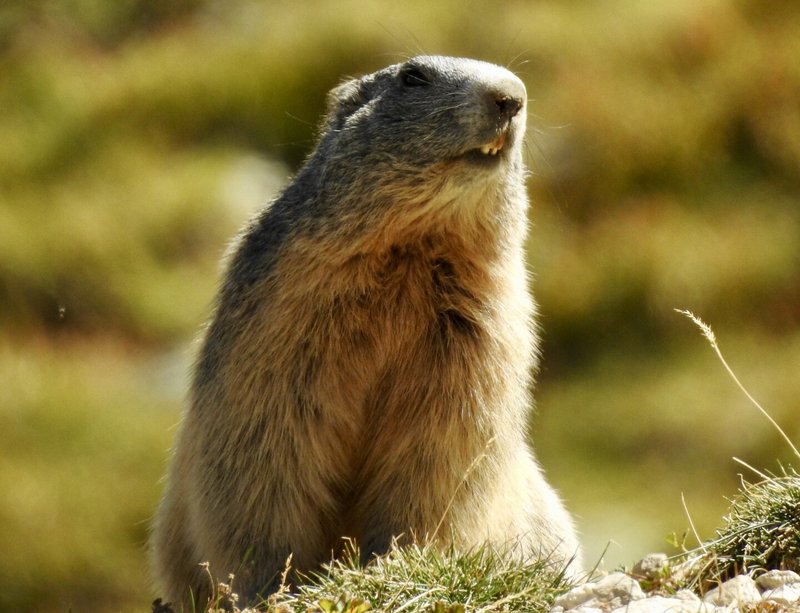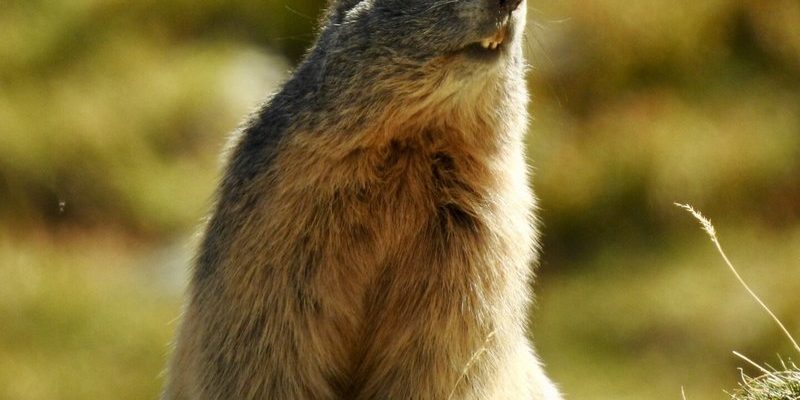
The Alpine Marmot is one of those fascinating creatures that often piques curiosity. Imagine a fluffy little animal that’s perfectly adapted to life in the rocky, high-altitude mountains of Europe. These charming rodents are more than just cute; they play an essential role in their ecosystem. They are social, engaging, and have a lifestyle that’s as intriguing as it is complex.
You might picture the Alpine Marmot lounging on a sunny rock, chirping away with its friends, and soaking in the mountain views. They’re known for their remarkable burrowing habits and their ability to thrive in harsh conditions. But there’s so much more to them! From their social structure to their diet, let’s dive deeper into the life of this remarkable alpine dweller.
Habitat and Distribution
Alpine Marmots primarily inhabit the mountainous regions of the Alps, Pyrenees, and the Carpathians. They favor rocky slopes and grassy meadows, where they can dig extensive burrow systems. These burrows provide not just shelter but also a safe haven from predators. The high altitude means temperatures can drop significantly, but these mammals have adapted remarkably well.
In terms of geography, their range stretches across several countries, including Switzerland, France, and Italy. But despite their wide distribution in these mountain ranges, they are quite sensitive to climate changes. As temperatures rise, Alpine Marmots may find their habitats shrinking, leading to changes in behavior and population dynamics.
Physical Characteristics
The Alpine Marmot is a large rodent, weighing between 5 to 11 kg (11 to 24 pounds) and measuring roughly 60 to 80 cm (24 to 31 inches) in length. Its thick fur is usually a mix of brown and gray, providing camouflage against the rocky terrains. Their stocky build and short legs might make them look clumsy, but these adaptations are perfect for their burrowing lifestyle.
One striking feature is their broad, flat heads and large, rounded ears. These features enhance their hearing, which is crucial for detecting predators. Their sharp claws are strong and well-suited for digging, while their keen eyesight allows them to spot threats from a distance. It’s as if they’re nature’s little watchdogs, always on alert while enjoying the beauty of their alpine home.
Behavior and Social Structure
Alpine Marmots are highly social animals, living in colonies that can consist of up to 20 individuals. These colonies have a defined social structure, where each member has a role. Typically, there’s a dominant male and female, and the rest of the group helps with foraging and guarding the burrow. This social interaction is essential for their survival, as it allows them to alert one another of potential predators.
You might often hear their distinctive whistles, which serve as alarm calls. When danger approaches, they communicate through a series of chirps, warning others to retreat to the safety of their burrows. This cooperation not only reinforces social bonds but also enhances their chances of survival in the wild.
Diet and Foraging Habits
The diet of the Alpine Marmot primarily consists of various herbs, grasses, and flowers. They are herbivores and spend much of their day foraging for nutritious plants. Their strong front teeth are perfect for nibbling on tough vegetation, and they often consume a wide range of food depending on the season. In spring and summer, they enjoy fresh greens, while autumn leads them to consume more dried plants to fatten up for the winter.
Interestingly, these marmots also exhibit selective foraging behavior. They tend to prefer certain types of plants that are higher in nutritional value. This choice is crucial, especially in preparing for hibernation. Alpine Marmots can eat a significant amount of food to build fat reserves, which will sustain them during the long winter months when food is scarce.
Reproduction and Life Cycle
The breeding season for Alpine Marmots usually occurs in early spring. After a gestation period of about 30 days, a female typically gives birth to three to five pups. These cute little furballs are born blind and hairless, relying on their mother for warmth and nourishment. You can imagine how bustling the burrow becomes as the pups grow quickly, beginning to venture out and explore their surroundings.
As they mature, the young marmots learn essential survival skills from their parents and other colony members. By the end of summer, they start to develop their foraging skills, preparing to take on the responsibilities of adulthood. This close-knit family dynamic ensures that the pups receive the guidance they need to thrive in a sometimes harsh environment.
Hibernation Patterns
During winter, Alpine Marmots enter a state of hibernation, which is vital for their survival. As temperatures drop and food becomes scarce, they retreat to their burrows and lower their metabolic rates significantly. This means they can survive on the fat reserves they’ve built up during the warmer months.
Hibernation lasts around six months, typically from October to April. During this time, their body temperature drops, and they enter a deep sleep, waking occasionally to hydrate. It’s fascinating to think about how these creatures have adapted to thrive in environments that many other animals would find challenging. Their ability to hibernate is a crucial survival tactic that allows them to endure the winter months.
Conservation Status
While the Alpine Marmot is currently classified as a species of Least Concern by the IUCN, they are not without threats. Habitat destruction due to climate change, human development, and tourism can impact their populations. In some areas, they face predation from foxes and eagles, further stressing their numbers.
Conservation efforts are essential to ensure that these charming creatures continue to thrive. By protecting their natural habitats and raising awareness about their ecological role, we can help preserve this iconic alpine mammal. Creating more protected areas in their natural range is vital for their survival and the overall health of mountain ecosystems.
Interesting Facts About Alpine Marmots
| Scientific Name: | Marmota marmota |
| Size: | 60-80 cm (24-31 inches) |
| Weight: | 5-11 kg (11-24 pounds) |
| Habitat: | Alpine meadows and rocky slopes |
| Diet: | Herbs, grasses, flowers |
| Lifespan: | Up to 15 years in the wild |
| Social Structure: | Live in colonies |
FAQ
What is the Alpine Marmot’s primary habitat?
The Alpine Marmot primarily resides in mountainous regions such as the Alps and Pyrenees, thriving in rocky slopes and grassy meadows. These habitats provide the necessary conditions for their burrowing lifestyle and protection from predators.
How do Alpine Marmots communicate?
Alpine Marmots communicate with a variety of vocalizations, including distinctive whistles that serve as alarm calls. These sounds alert other members of the colony to potential dangers, showcasing their social structure and cooperation.
Are Alpine Marmots solitary or social animals?
Surprisingly, Alpine Marmots are social creatures that live in colonies. They have a defined hierarchy, with dominant males and females overseeing the group, which helps them work together in various tasks, like foraging and guarding against threats.
What do Alpine Marmots eat?
As herbivores, Alpine Marmots primarily consume grasses, herbs, and flowers. Their diet varies with the seasons, allowing them to select high-nutrient plants during warmer months while fattening up for hibernation.
How long do Alpine Marmots hibernate?
Alpine Marmots enter hibernation during the winter months, typically from October to April. This deep sleep allows them to survive the cold when food is scarce, relying on stored fat reserves until warmer weather returns.
What adaptations help Alpine Marmots survive in the mountains?
Alpine Marmots have several adaptations for mountain life, such as their thick fur for insulation, strong claws for digging, and excellent communication skills to alert one another of threats. Their social structure also enhances their survival chances.
Are Alpine Marmots endangered?
Currently, Alpine Marmots are classified as a species of Least Concern. However, they face threats from habitat destruction, climate change, and predation. Conservation efforts are essential to ensure their continued survival in the wild.
What is the average lifespan of an Alpine Marmot?
In the wild, Alpine Marmots can live up to 15 years, although many factors, including predation and environmental conditions, can affect their lifespan. Their social structure and behavior play a crucial role in their survival throughout these years.
Can Alpine Marmots be kept as pets?
While Alpine Marmots are charming and social animals, they are not suitable as pets. They have specialized needs and require specific environmental conditions to thrive, which are challenging to recreate in a domestic setting.
How can we help protect Alpine Marmots?
Protecting Alpine Marmots involves raising awareness about their ecological importance and supporting conservation efforts in their natural habitats. Creating protected areas and minimizing human impact in their ecosystems can significantly help their survival.

